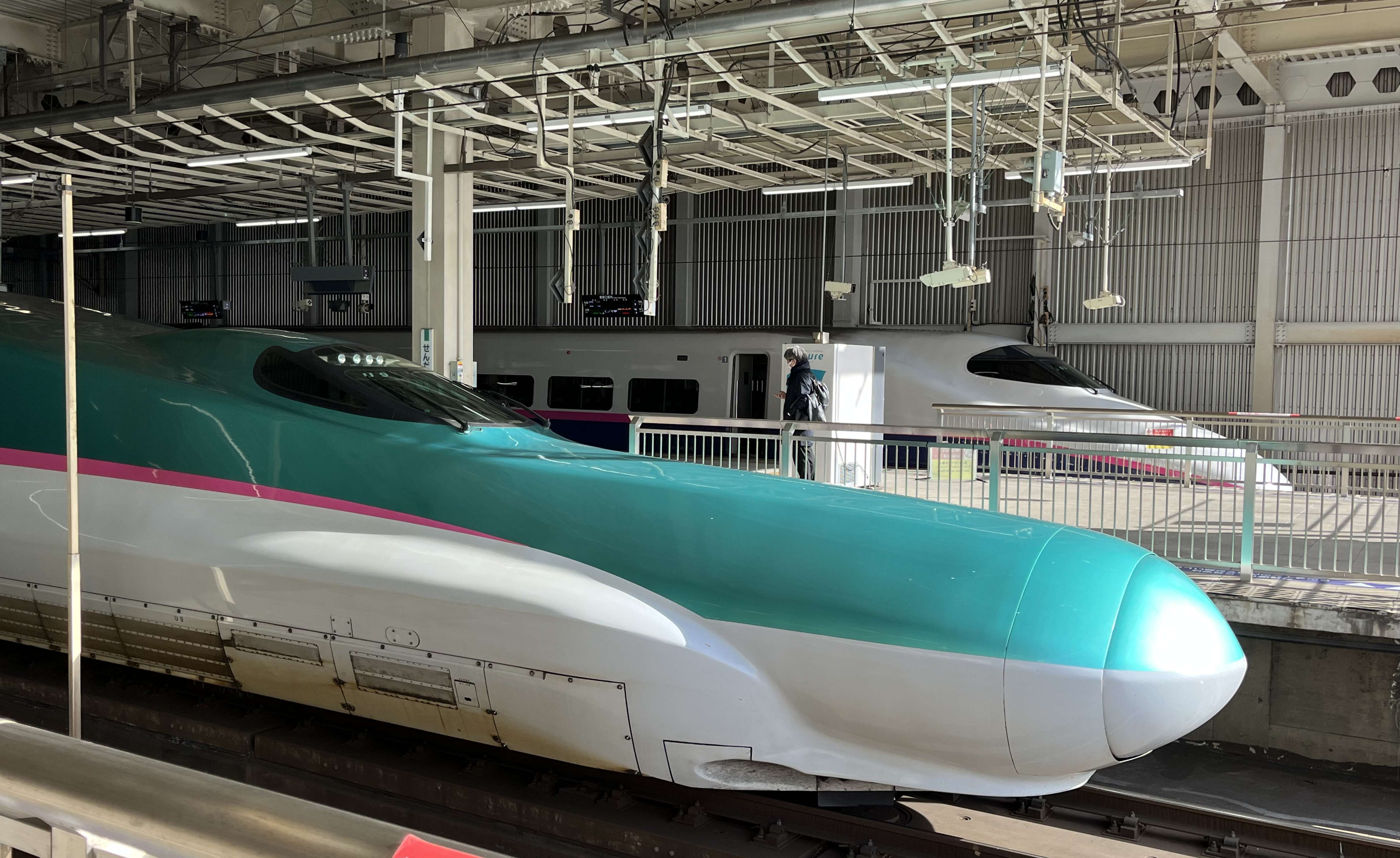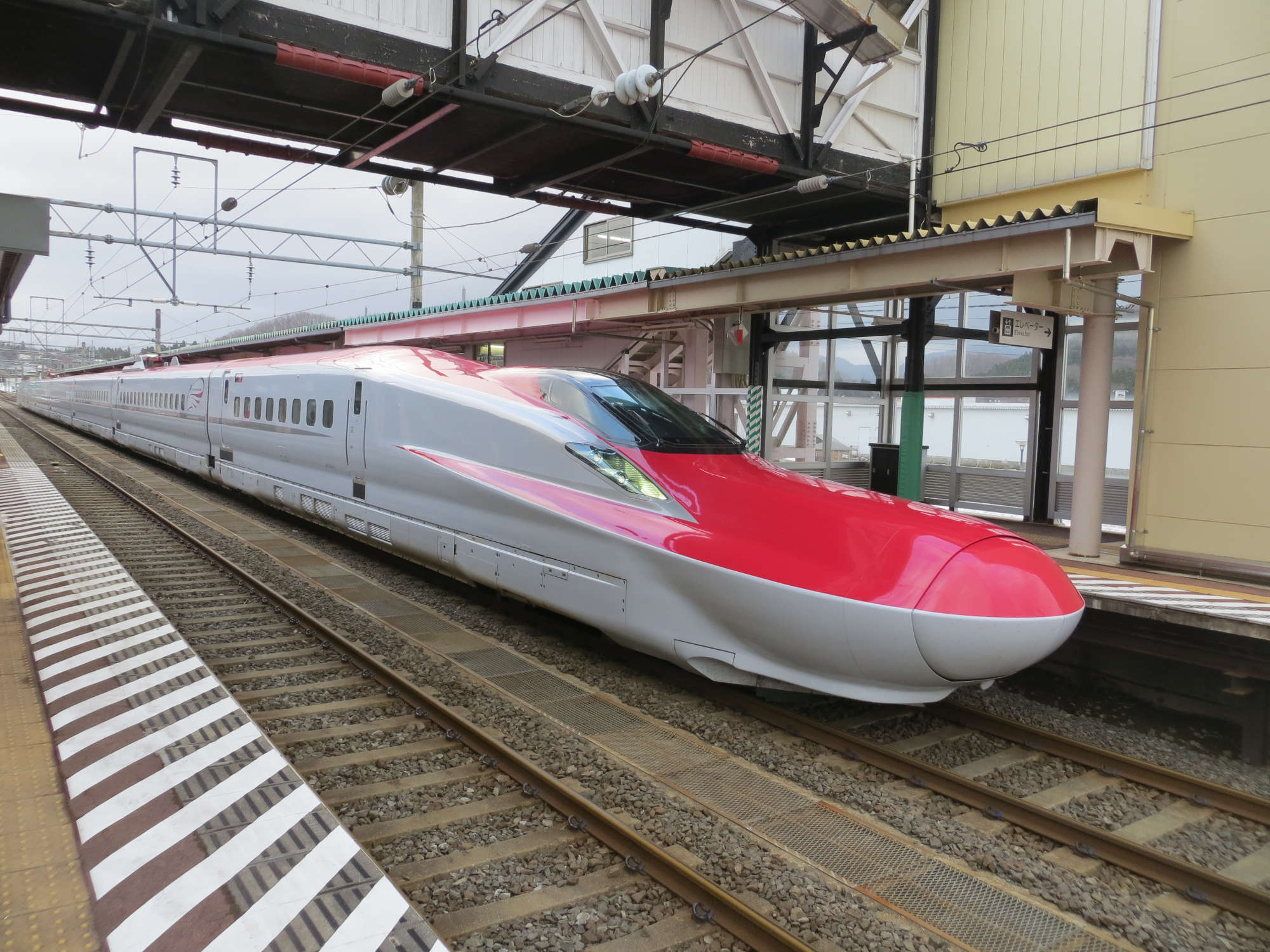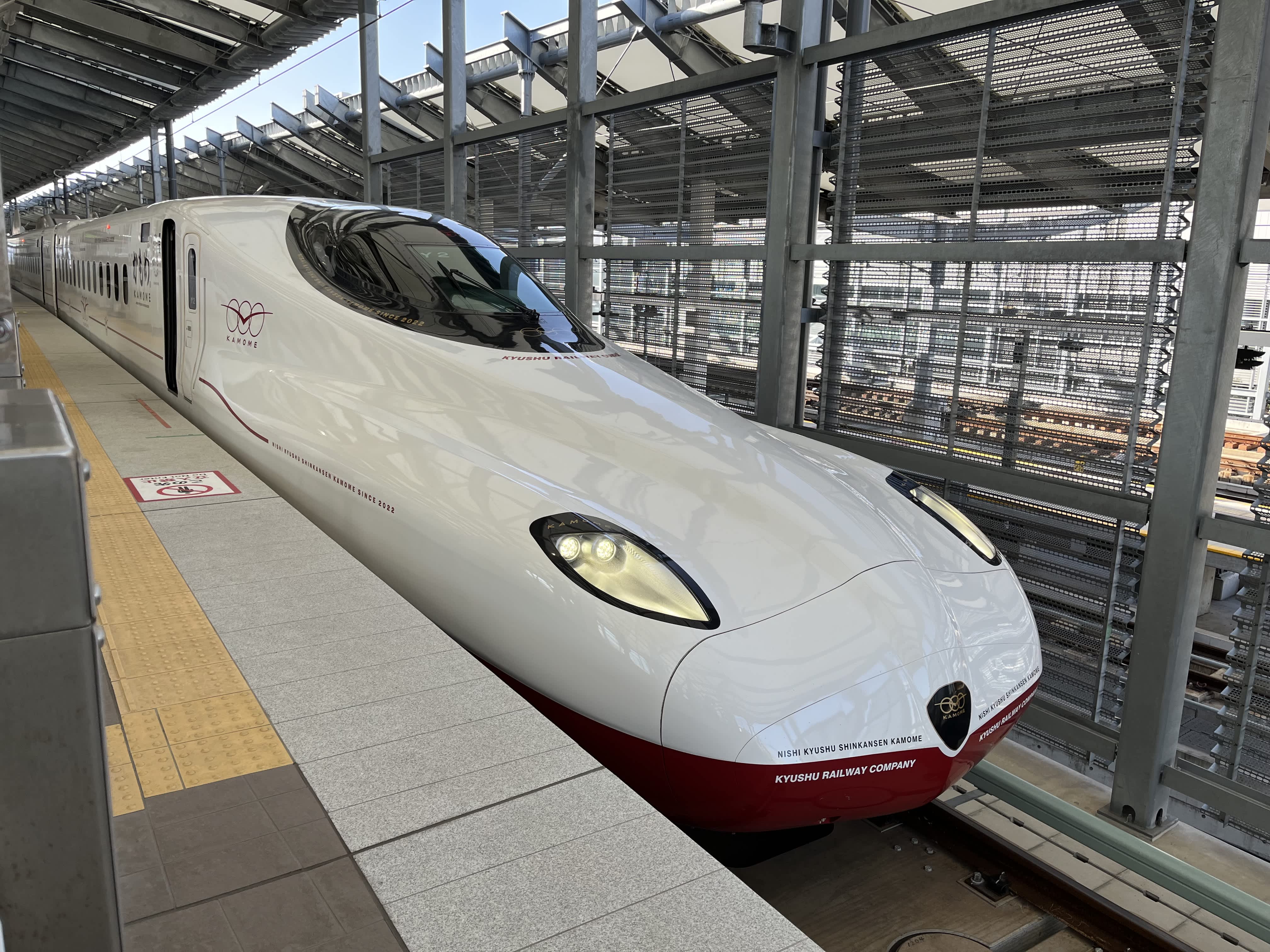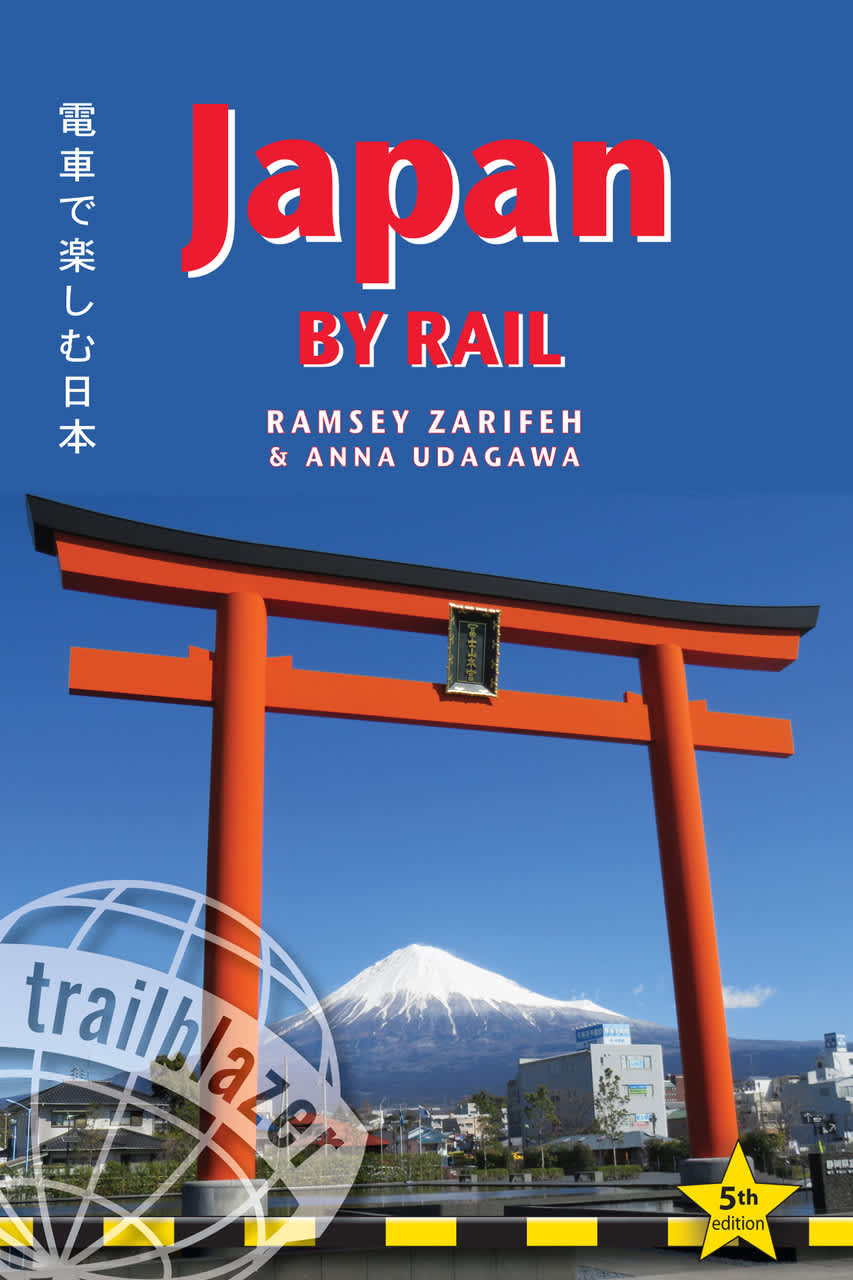
The extensive Japan Rail (JR) network makes travelling by train the easiest and most relaxing way to discover Japan and with a Japan Rail Pass your travel in Japan can be very cost effective, particularly until October 2023.
The Japan Rail Pass is valid on most of JR’s services and permits unlimited travel on the JR network on the four main islands; it is also possible to travel on some private lines as long as you get on and off at connecting JR stations. On top of that, seat reservations are free.

The Japan Rail Pass is available in three time periods (7-day, 14-day and 21-day) and for Ordinary and Green Class. Ordinary class travel in Japan is not far off first-class travel in many countries, especially the UK. Green Class is the official first class; the seats are wider and have more leg space and there is also more luggage space but not all trains in Japan offer Green Class carriages.

Anyone who will be entering Japan with a non-Japanese passport and as a tourist (‘temporary visitor status’) is eligible to buy a pass and can buy as many as they want. The pass has also recently become machine-readable so, rather than going to a manned gate, it is now possible to use at most ticket gates.

Passes can be bought through an authorised sales agent in your home country or from an online distributor. Currently, the more expensive way is to buy a pass in Japan or online through JR; however, from October 2023 there will only be one price. The advantage of buying online through JR is that up to six seat reservations can be made prior to going to Japan. You can also choose your seats (subject to availability) and therefore have guaranteed travel, especially during busy periods.

The prices are fixed in yen; the rate you pay for the pass depends on the exchange rate used by the agent.
The best-value from the pass comes if you travel on the shinkansen (bullet train) and since there are shinkansen lines on three of the four main islands, extending from Hokkaido in the north and down to the southernmost tip of Kyushu, you can travel almost the whole length of Japan on a shinkansen service. If you are only staying in one area of Japan, one of JR’s regional passes may be better value than a Japan Rail Pass.

With the current Japan Rail Pass, travellers are not able to use the Nozomi (the fastest shinkansen train that runs between Tokyo and Shin-Osaka) and Mizuho (between Shin-Osaka and Hakata) services, although there are alternatives for both. The new plan for October 2023 will include access to both these trains for an additional price, as opposed to full-priced tickets. Another potential benefit is that the new plan will include discounted tickets to certain tourist attractions.
Breaking it down into numbers
As it stands, the amazing value of the current Japan Rail Pass can be seen from this sample itinerary for 14 days in Japan:
| Fare | Seat Reservation Cost | |
| Tokyo to Kyoto | ¥8,360 | ¥5,290 |
| Kyoto to Hiroshima | ¥6,600 | ¥4,500 |
| Hiroshima to Shin-Osaka | ¥5,720 | ¥4,500 |
| Shin-Osaka to Kanazawa* | ¥4,840 | ¥2,950 |
| Kanazawa to Tokyo | ¥7,480 | ¥6,700 |
| TOTAL | ¥33,000 | ¥23,940 |
*Not a shinkansen service.
Without a Japan Rail Pass the total cost of travel would be ¥56,940. With a 14-day Ordinary Class pass (¥47,250) and no additional travel you would have saved ¥9690. It is important to note also that this sample itinerary only accounts for inter-city JR services; you will most likely be using other JR services during your travel, such as within cities and regions and getting to and from the airport, so there is further value to get from the Japan Rail Pass.
That said, from an as yet unspecified date in October, the cost of a Japan Rail Pass will increase by about 65-74%. A 14-day Ordinary Class pass will then be ¥80,000. The increase is significant but as long as you play your cards right, you can still save a bit of money using the new Japan Rail Pass.

To get real value from the new pass, it will be essential to do a lot more travelling by shinkansen or have at least one really long journey. For example, a trip from Hiroshima to Nagasaki would cost ¥15,180 one-way (so ¥30,360 return) including a reserved seat; from Hiroshima to Kagoshima-chuo (at the bottom of Kyushu) would cost ¥18,000 and from Tokyo to Hakodate (Hokkaido) would cost ¥24,180 both for one-way journeys with seat reservations. The total cost of the itinerary above plus a return trip to Nagasaki would cost ¥56,940 + ¥30,360 = ¥87,300. Thus, after October 2023, you would save at least ¥7300 by having a 14-day Ordinary Class Japan Rail Pass.

How to make the most of the Japan Rail Pass
When in Tokyo, you can make use of the pass on JR’s Yamanote Line; it’s a circular line which calls at many of the main tourist areas, such as: Shibuya for the Shibuya Scramble crossing; Harajuku for Meiji Jingu shrine; Shinjuku for the neon lights and free views of Tokyo from the Tokyo Metropolitan Government Building; Ueno for its park and also Tokyo National Museum; and of course, Tokyo station for the Imperial Palace.
The JR Chuo/Sobu Line crosses Tokyo and also provides access to places worth visiting. The bonus of these lines, unlike the metro/subway, is that they are above ground so you can see where you are going. Osaka also has a JR Loop Line which runs above ground and is a great way to reach the main sights e.g., Osakajokoen or Morinomiya stations for Osaka Castle and Tennoji station for the 300m-high Abeno Harukas building for great city views.

The JR West ferry to the unmissable island of Miyajima is also included in the Japan Rail Pass so going there for a day from Hiroshima is free.
Value from the Japan Rail Pass also comes from the fact that various cities, including Kyoto, Hiroshima and Kanazawa, have local JR bus services which go to tourist sights. Even though the services and routes aren’t as comprehensive as the official sightseeing buses, they help to save money.

Another way to make the most of a Japan Rail Pass is to choose certain cities as a base and do lots of day trips – the advantage also is that you can travel luggage-free and save time checking in and out of hotels. Tokyo is particularly good in this respect as shinkansen lines go north, west and (north-)east from there.

On a recent trip to Japan, we used Sendai as a base and had day trips to Matsushima, Tokyo and Nikko and if there hadn’t been as much snow we would have gone up to Aomori and Morioka. From Okayama we went to Kyoto and to the art island, Naoshima (though note the ferry for that isn’t included in the pass). Other good cities to use as a base are Kyoto, Osaka, Takasaki (from where you can easily go to Nagano for the snow monkeys and Niigata to visit a sake brewery) and in Kyushu Kumamoto is a great base as it is in the middle of the shinkansen line south to Kagoshima.

The Japan Rail Pass also provides great flexibility. We know of one person who hadn’t managed to see Mt Fuji when in Hakone because the weather was so overcast so one day when she was in Kyoto, she took the shinkansen back to Mishima where thankfully the weather was good and she could see this iconic mountain. With a regional pass this wouldn’t have been possible without paying for the journey.

The front-view of the Komachi bullet train
We’ve also appreciated having a Japan Rail Pass on the first few days in Japan when we are feeling jet-lagged. It is great to know that you could hop on any train, though the most comfortable are the shinkansen, and have a quick nap. If the nap isn’t that quick and you wake up miles from your starting point it wouldn’t be a problem as your pass is valid everywhere.
In short, with a bit of planning it would be perfectly possible to have a holiday in Japan just using JR services and your Japan Rail Pass and therefore not needing to spend any more on travel other than the cost of the pass.



























































